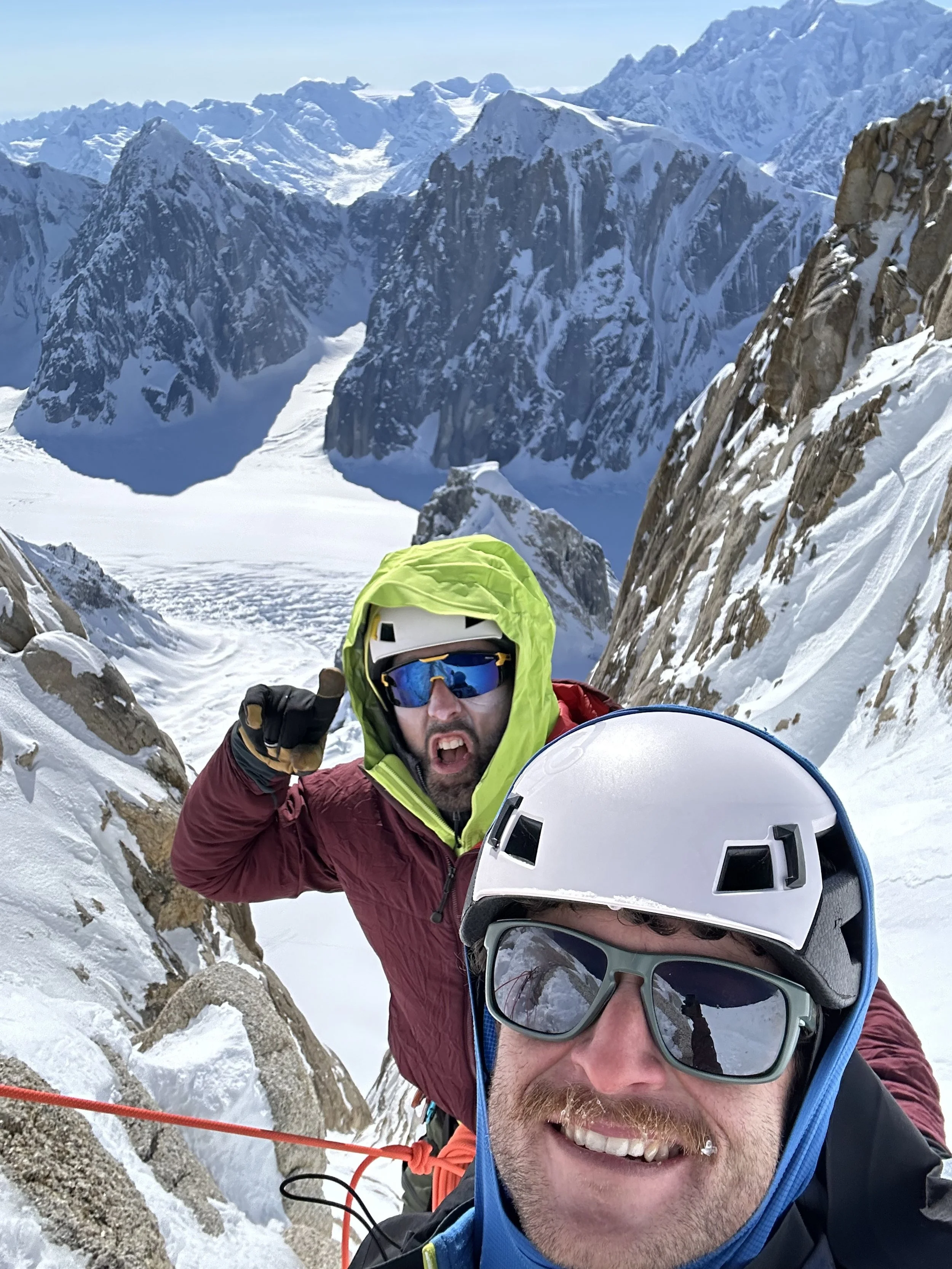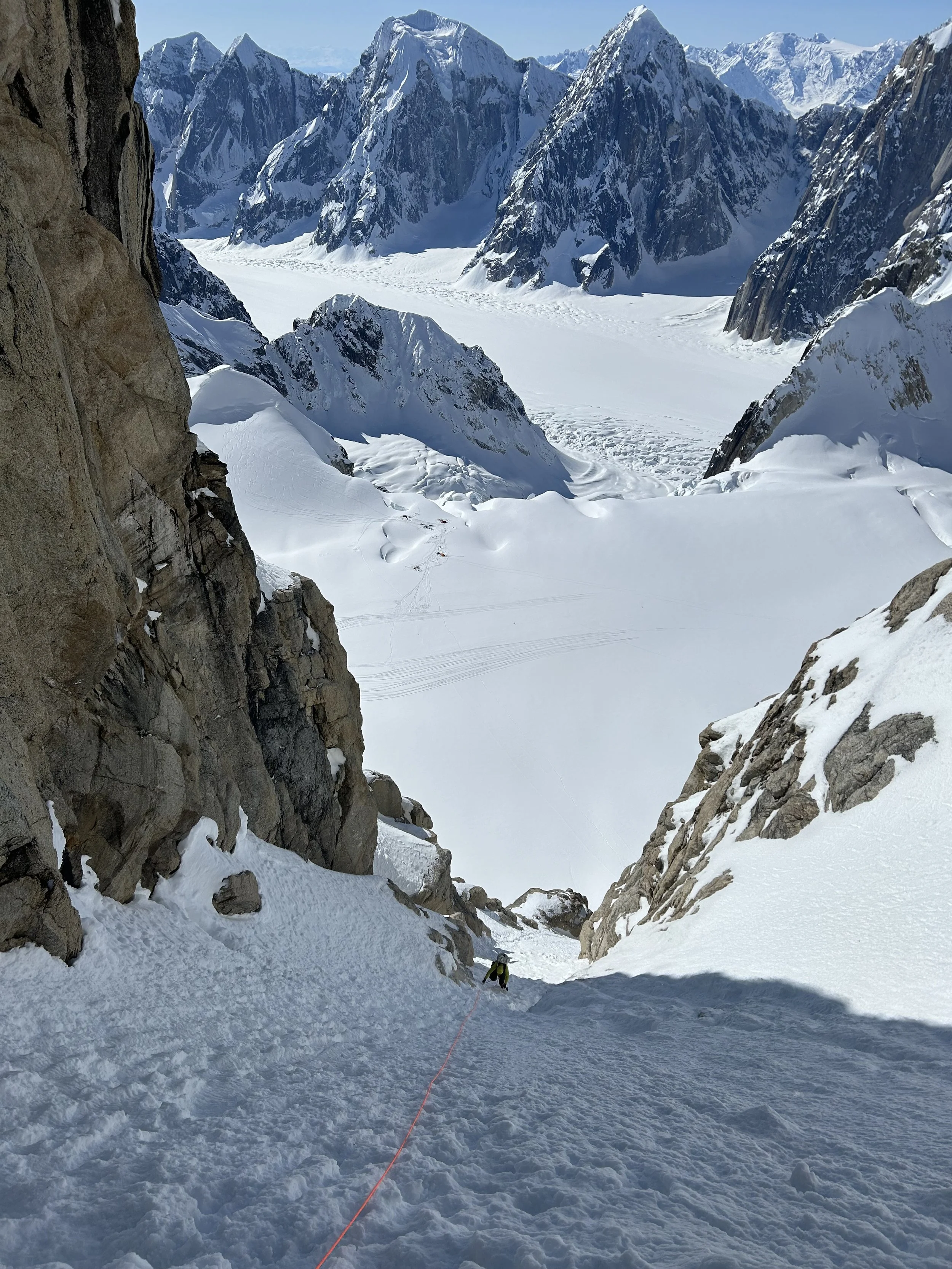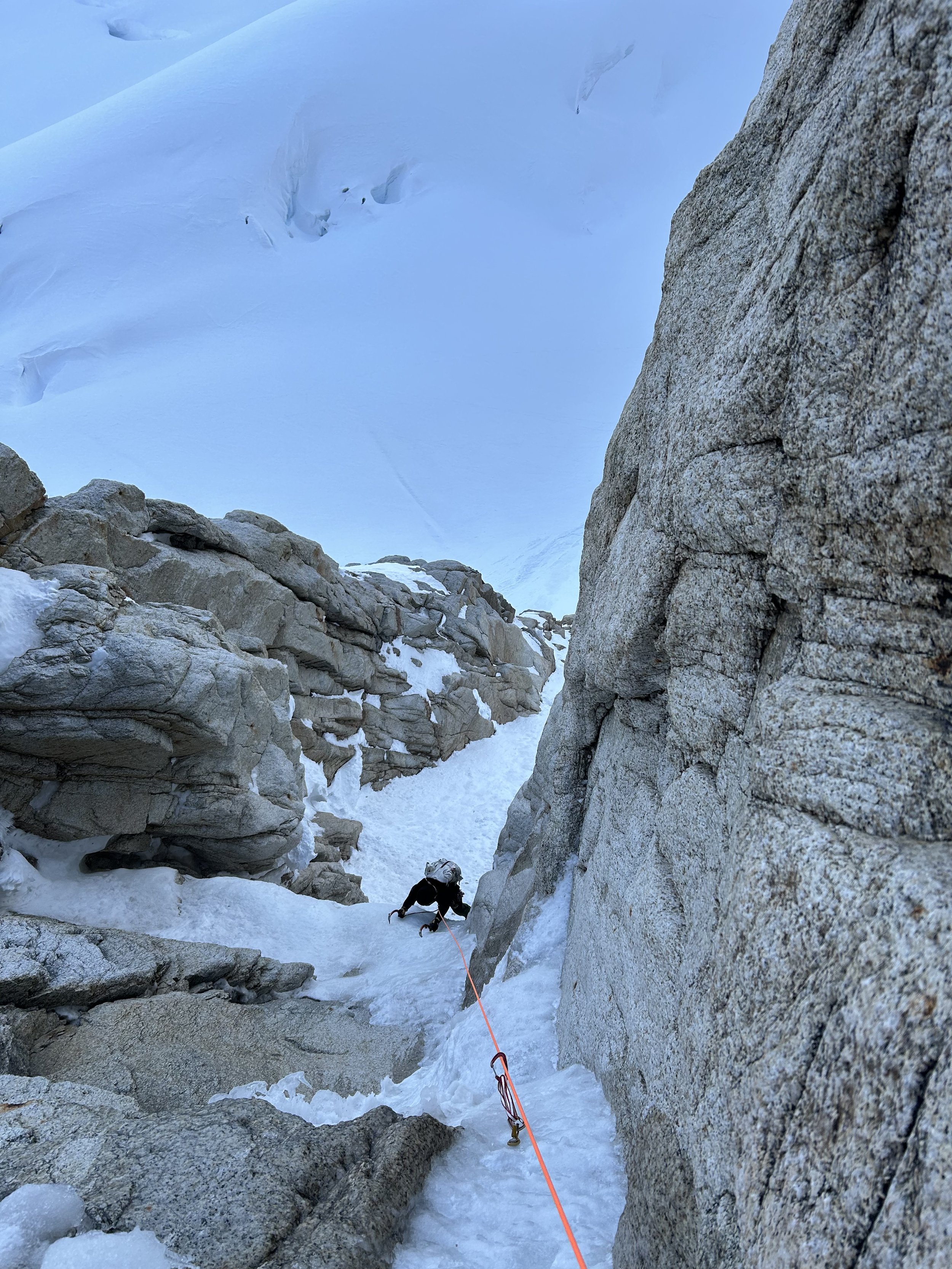A Trip to the Iconic Mooses Tooth in the Alaska Range
The Mooses Tooth, a striking granite peak in the Alaska Range, has a storied history of climbing that highlights both the allure and the challenges of Alaskan mountaineering. Rising to 10,335 feet, its steep rock faces and unpredictable weather have made it a coveted but difficult target for climbers. The peak was first attempted in the 1960s by American mountaineers, who were drawn to its technical demands and remoteness. However, it wasn’t until 1975 that the first successful ascent was achieved by Thomas Davies, John Krakauer and Nate Zinsser, via the route Ham and Eggs. Since then, The Moose’s Tooth has become famous in the climbing community, drawing elite climbers aiming to establish new and challenging routes, particularly on its daunting East Face. The peak remains a test of endurance, skill, and resilience, with climbers today still captivated by its rugged beauty and iconic status within Alaskan climbing.
Last April our WCG team took a trip to the Mooses Tooth in late April and experienced some success climbing two of its most famous routes. After flying into Anchorage and shopping for groceries we took a shuttle to the small town of Talkeetna, where all trips to the Alaska Range begin. Talkeetna is one of my favorite places to be, especially in the early season before all the big crowds arrive to climb Denali. I’ve been doing trips to the Range for over 10 years and I love running into all my friends there. We did the usual day of packing and sorting by the storage containers at Talkeetna Air Taxi.
After a weather delay we found ourselves flying in on the same day as several other parties looking to climb Ham and Eggs as well. The night before after a couple beers at the Fairview, the local watering hole, we came up with a somewhat bold strategy. After landing on the Root Canal glacier we would set up a hasty camp and immediately start up the route. We figured that the other parties would be planning to spend the day setting up camp, scoping the face and getting organized to climb the following day. We already had our bags packed and had talked to a friend with recent beta on conditions. Timing would be important as you want to avoid being in the middle section of the route during the heat of the day, usually between 4 and 8pm. Even in April the intense Alaskan sun will melt the slabs of ice plastered onto the upper walls and chunks will rain down and funnel into the meat of the route. We would need to move efficiently.
Luckily I had climbed a bunch with Nick over the past few years in places like Ouray, Colorado, the Black Canyon of the Gunnison and even a trip to the Alaska Range on the nearby Peak 11300. I knew he was dialed and could move fast in this terrain. Leaving camp just after noon we blasted up the approach slopes following a nice bootpack from previous climbers. The lower third of the route can be simul-climbed by competent climbers and we wasted no time getting to the crux section of the route. This starts with a steep curtain of ice followed by a few pitches through a narrow couloir. It was magical climbing! The calf burning slog below rewarded us with sticky ice mixed in with perfect neve through a few engaging steep bulges. This is as classic as it gets! A few more easy pitches of simul-climbing brought us to the summit ridge. Earlier in the season my friend Elias had fixed some pickets on the route, making the descent down the ridge a breeze. Unfortunately he had used 70m ropes and we only had 60’s! A little bit of lowering and downclimbing had us back to the main couloir without too much trouble. The rappels down Ham and Eggs went pretty smooth and the sunset over the Ruth Gorge was spectacular. 11 hours after leaving camp we were back at our camp. Not bad for the first time on the route!
The next day was a brilliant, sunny rest day in camp while all the other teams climbed the route. Our next plan was to tackle the steeper, icier Shaken Not Stirred. We had heard mixed reviews of the conditions this year. Some said the crux was in bad shape. Others said a steep traverse through a panel of sugar snow guarded the easy pitches to the summit. We decided to go see for ourselves the next day. The approach ends in an exposed traverse above the bergschrund to the start of the route. The first pitch began with a short section of drytooling in a thin crack with a couple thin patches of delaminating neve. This gave way to a few steep, narrow pitches of ice that we thought were the most fun of the whole route. This led to a moderate couloir through a hallway of granite before the “the narrows”, a 500’ section of steep, icy chimneys and overhangs. The crux was indeed in spicy condition. A bit of wild, delicate stemming around a detached pillar of ice, some pumpy, thin climbing through the overhang and we were on top of the pitch!
One more easier pitch of mixed climbing led to the sugar snow traverse. In all my years of alpine climbing I’ve found that these unconsolidated snow pitches can make or break a successful ascent in the Alaska Range. Luckily our experience the previous year wading through thousands of feet of sugar snow on the SW Ridge of Peak 11300 had prepared us well. A bit of tedious wallowing and we were cruising up the final slopes to the top of Englishman’s Col, our high point for the day. Sometimes teams will continue up the steep and heavily corniced ridge above to the true summit but we decided we had had enough excitement for the day. Several rappels later and we were back at the base with another amazing route in the bag.
We had originally planned to “bump” to Kahiltna Base Camp but the Alaskan weather had other plans for us, dumping a couple feet of snow over the next few days and shutting down all the air services. We did manage to squeeze in a trip up the East Ridge of the Wisdom Tooth on a whiteout day before most of the snow arrived. I highly recommend it if the weather isn’t good enough for the longer routes on the Mooses Tooth. It’s classic Alaskan ridge climbing and a good prep day for other climbs in the range. Eventually the storm cleared and we flew back to Talkeetna, satiated by our adventures on the Tooth. We’ll be back next year for more adventures!
Western Climbing Guides specializes in trips like these to the Alaska Range and beyond. Come out to train with us on the waterfalls and mixed climbs of Ouray, long adventure routes in the Black Canyon, towers and splitter cracks of the Utah desert and glaciated rocky summits of the North Cascades. We can help build you a well rounded background in alpine climbing fundamentals so one day you can experience the magic of the Mooses Tooth, other peaks in the Alaska Range like Mt. Huntington and Peak 11300, or anywhere else in the world where the peaks are wild and the climbing is classic.








